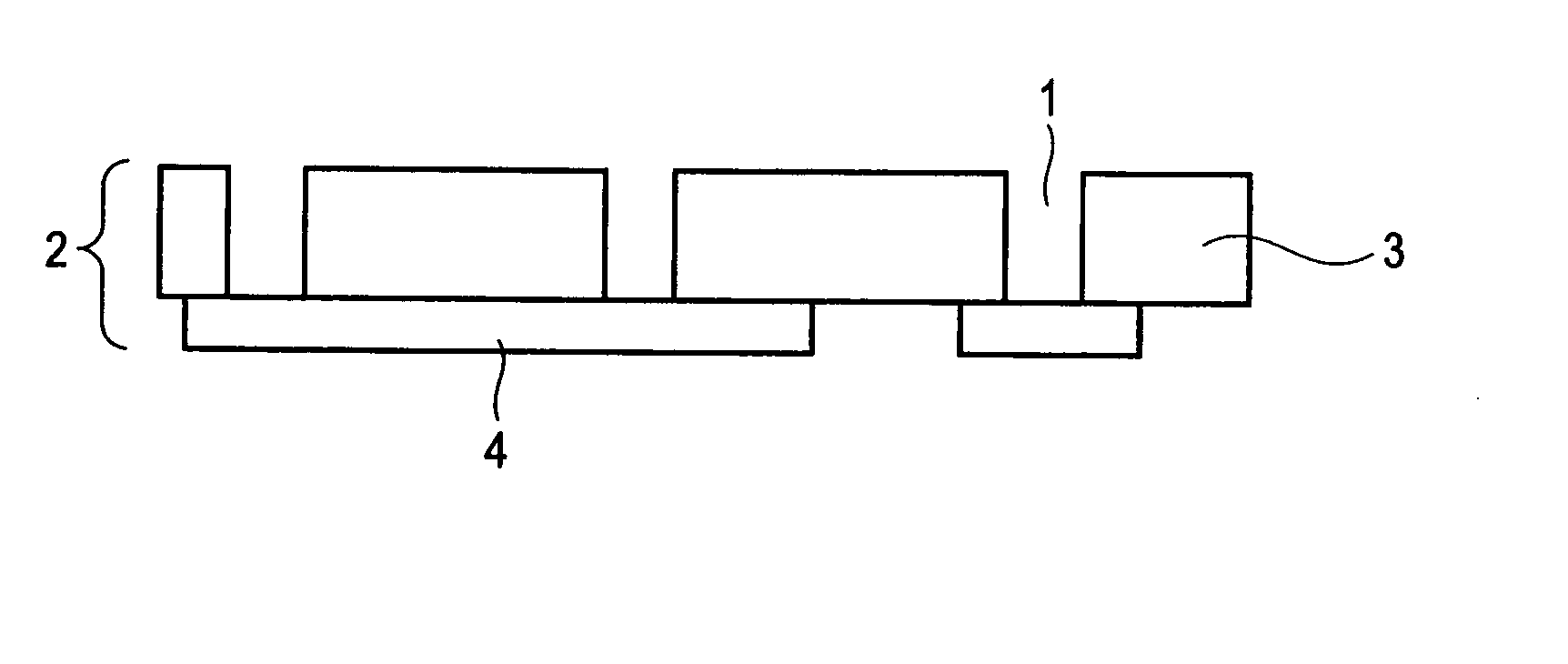Conductive Paste and Method for Manufacturing Multilayer Printed Wiring Board Using the Same
a technology of multi-layer printed wiring and conductive paste, which is applied in the direction of resistive material coating, cable/conductor manufacturing, non-conductive materials with dispersed conductive materials, etc., can solve the problems of poor filling ability into via holes, insufficient connection, and reduced reliability of connection, so as to reduce reliability and increase connection resistance at the connected portion
- Summary
- Abstract
- Description
- Claims
- Application Information
AI Technical Summary
Benefits of technology
Problems solved by technology
Method used
Image
Examples
example 1
[0060]A flat Ag filler having an average particle diameter (50% D) of 4 μm is added to 70% by weight of a bisphenol A-type resin (high-molecular-weight type having a molecular weight of 55,000) and 30% by weight of a rubber (NBR)-modified epoxy resin [EPR4030 manufactured by Asahi Denka Kogyo K.K.) in an amount so that the ratio in a conductive paste after curing became 55% by volume, and butylcarbitol acetate is further added thereto as a solvent. The whole is mixed in a three-roll roller and then an imidazole-based latent curing agent is further added and mixed to manufacture a conductive paste. In this regard, the bisphenol A-type resin (high-molecular-weight type having a molecular weight of 55,000) is mixed with butylcarbitol acetate beforehand and then the rubber (NBR)-modified epoxy resin [epoxy equivalent: 380 g / eq] and the like are added.
example 2
[0061]A conductive paste is manufactured in the same manner as in Example 1 except that a bisphenol F-type epoxy resin [Epicoat 806 manufactured by Japan Epoxy Resin K.K., epoxy equivalent: 160-170 g / eq] is used instead of the rubber (NBR)-modified epoxy resin.
example 3
[0062]A conductive paste is manufactured in the same manner as in Example 1 except that a naphthalene bifunctional epoxy resin [HP4032 manufactured by Dainippon Ink and Chemicals, Incorporated, epoxy equivalent: 135-165 g / eq] is used instead of the rubber (NBR)-modified epoxy resin.
PUM
| Property | Measurement | Unit |
|---|---|---|
| particle diameters | aaaaa | aaaaa |
| elastic modulus | aaaaa | aaaaa |
| humidity | aaaaa | aaaaa |
Abstract
Description
Claims
Application Information
 Login to View More
Login to View More - R&D
- Intellectual Property
- Life Sciences
- Materials
- Tech Scout
- Unparalleled Data Quality
- Higher Quality Content
- 60% Fewer Hallucinations
Browse by: Latest US Patents, China's latest patents, Technical Efficacy Thesaurus, Application Domain, Technology Topic, Popular Technical Reports.
© 2025 PatSnap. All rights reserved.Legal|Privacy policy|Modern Slavery Act Transparency Statement|Sitemap|About US| Contact US: help@patsnap.com



